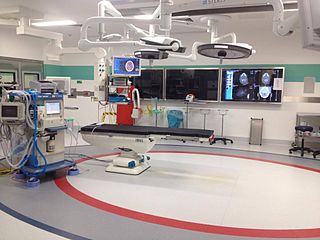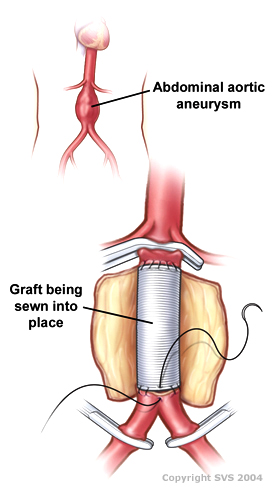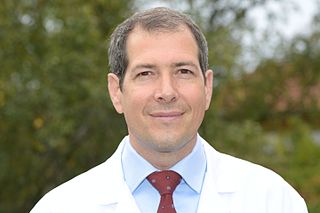
Interventional radiology (IR) is a medical specialty that performs various minimally-invasive procedures using medical imaging guidance, such as x-ray fluoroscopy, computed tomography, magnetic resonance imaging, or ultrasound. IR performs both diagnostic and therapeutic procedures through very small incisions or body orifices. Diagnostic IR procedures are those intended to help make a diagnosis or guide further medical treatment, and include image-guided biopsy of a tumor or injection of an imaging contrast agent into a hollow structure, such as a blood vessel or a duct. By contrast, therapeutic IR procedures provide direct treatment—they include catheter-based medicine delivery, medical device placement, and angioplasty of narrowed structures.

Vascular surgery is a surgical subspecialty in which vascular diseases involving the arteries, veins, or lymphatic vessels, are managed by medical therapy, minimally-invasive catheter procedures and surgical reconstruction. The specialty evolved from general and cardiovascular surgery where it refined the management of just the vessels, no longer treating the heart or other organs. Modern vascular surgery includes open surgery techniques, endovascular techniques and medical management of vascular diseases - unlike the parent specialities. The vascular surgeon is trained in the diagnosis and management of diseases affecting all parts of the vascular system excluding the coronaries and intracranial vasculature. Vascular surgeons also are called to assist other physicians to carry out surgery near vessels, or to salvage vascular injuries that include hemorrhage control, dissection, occlusion or simply for safe exposure of vascular structures.

An aortic aneurysm is an enlargement (dilatation) of the aorta to greater than 1.5 times normal size. They usually cause no symptoms except when ruptured. Occasionally, there may be abdominal, back, or leg pain. The prevalence of abdominal aortic aneurysm ("AAA") has been reported to range from 2 to 12% and is found in about 8% of men more than 65 years of age. The mortality rate attributable to AAA is about 15,000 per year in the United States and 6,000 to 8,000 per year in the United Kingdom and Ireland. Between 2001 and 2006, there were approximately 230,000 AAA surgical repairs performed on Medicare patients in the United States.

A thoracic aortic aneurysm is an aortic aneurysm that presents primarily in the thorax.

Endovascular aneurysm repair (EVAR) is a type of minimally-invasive endovascular surgery used to treat pathology of the aorta, most commonly an abdominal aortic aneurysm (AAA). When used to treat thoracic aortic disease, the procedure is then specifically termed TEVAR for "thoracic endovascular aortic/aneurysm repair." EVAR involves the placement of an expandable stent graft within the aorta to treat aortic disease without operating directly on the aorta. In 2003, EVAR surpassed open aortic surgery as the most common technique for repair of AAA, and in 2010, EVAR accounted for 78% of all intact AAA repair in the United States.
Michael L. Marin is an American vascular surgeon. Together with Drs. Frank Veith, Juan C. Parodi and Claudio J. Schonholz, he was the first in the United States to perform minimally invasive aortic aneurysm surgery. In 2004, he was the first doctor to implant an intravascular telemetric monitor -- a device that alerts to physicians any leakage in aortic stent-grafts.

Peter Lin is an American vascular surgeon, medical researcher, specializing in minimally invasive endovascular treatment of vascular disease. He has published extensively in the area of vascular surgery and endovascular surgery.

Robert E. Michler is an American heart surgeon specializing in heart surgery, aortic and mitral valve repair, coronary artery bypass surgery, aneurysm surgery, and management of the failing heart. In 2017, Michler received the Vladimir Borakovsky Prize in Moscow from the Ministry of Health of the Russian Federation for “his personal contributions to the development of cardiovascular surgery”.

Adventist HealthCare White Oak Medical Center is a hospital with 180 private patient rooms and serves patients in Montgomery, Prince George's, and surrounding counties.

A hybrid cardiac surgical procedure in a narrow sense is defined as a procedure that combines a conventional, more invasive surgical part with an interventional part, using some sort of catheter-based procedure guided by fluoroscopy imaging in a hybrid operating room (OR) without interruption. The hybrid technique has a reduced risk of surgical complications and has shown decreased recovery time. It can be used to treat numerous heart diseases and conditions and with the increasing complexity of each case, the hybrid surgical technique is becoming more common.

Open aortic surgery (OAS), also known as open aortic repair (OAR), describes a technique whereby an abdominal, thoracic or retroperitoneal surgical incision is used to visualize and control the aorta for purposes of treatment, usually by the replacement of the affected segment with a prosthetic graft. OAS is used to treat aneurysms of the abdominal and thoracic aorta, aortic dissection, acute aortic syndrome, and aortic ruptures. Aortobifemoral bypass is also used to treat atherosclerotic disease of the abdominal aorta below the level of the renal arteries. In 2003, OAS was surpassed by endovascular aneurysm repair (EVAR) as the most common technique for repairing abdominal aortic aneurysms in the United States.
Juan Carlos Parodi is an Argentinian vascular surgeon who introduced the minimally invasive endovascular aneurysm repair (EVAR) to the world and performed the first successful endovascular repair of an abdominal aortic aneurysm on 7 September 1990 in Buenos Aires. In 1992 he was the first in the United States to perform minimally invasive aortic aneurysm surgery together with Drs. Frank Veith, Michael L. Marin and Claudio J. Schonholz. He continues to develop new techniques, including seat belt and air bag technique for cerebral protection during carotid stenting. He is recognized as a renowned pioneer in the specialty of endovascular repairs of the aorta.

Christoph Huber MD, FMH, FECTS is a Swiss cardiac surgeon who is a professor and the head of the Division of Cardiac and Vascular Surgery at the University Hospital Geneva, Switzerland.
Gurukumar Bhalachandra Parulkar was an Indian cardiothoracic surgeon and a professor emeritus at King Edward Memorial Hospital and Seth Gordhandas Sunderdas Medical College. He also served as the president of the Association of Surgeons of India in 1984.

Nicolai Leontievich Volodos, was a Soviet/Ukrainian cardiovascular surgeon and scientist. An innovator, Volodos developed and introduced into clinical practice the world's first endovascular stent graft for the treatment of stenotic and aneurysmal diseases of arterial system. Volodos was described by his colleagues as ”a pioneer innovator and a giant in vascular and endovascular surgery” and ”a giant of historic proportions in the vascular and endovascular specialties, and the father of endovascular grafting”.

Hazim J. Safi, MD, FACS, is a physician and surgeon who is well known for his research in the surgical treatment of aortic disease. Safi and his colleagues at Baylor College of Medicine were the first to identify variables associated with early death and postoperative complications in patients undergoing thoracoabdominal aortic operations. Safi now serves as professor of cardiothoracic surgery, and founding chair at McGovern Medical School at The University of Texas Health Science Center in Houston, TX.

Venkatesh G. Ramaiah FACS is a vascular surgeon and researcher. His areas of work include innovations in the treatment of abdominal aortic aneurysms and peripheral arterial disease. Formerly a director of the Arizona Heart Hospital, he is Chief of Complex Vascular Services and Network Director of Vascular Services of the HonorHealth hospital system based in Scottsdale, Arizona. Dr. Ramaiah is also a co-founder of Pulse Cardiovascular Institute, an ambulatory surgical center in Scottsdale.
Gustavo S. Oderich is a Brazilian American vascular and endovascular surgeon who serves as a professor and chief of vascular and endovascular surgery, and is the director of the Advanced Endovascular Aortic Program at McGovern Medical School at The University of Texas Health Science Center at Houston and Memorial Hermann Health System. He previously served as chair of vascular and endovascular division at the Mayo Clinic in Rochester, Minnesota. Oderich is recognized for his work in minimally invasive endovascular surgery and research in fenestrated and branched stent-graft technology to treat complex aortic aneurysms and dissections.

Benjamin Starnes is a vascular surgeon and medical researcher. He holds the Alexander Whitehill Clowes Endowed Chair in Vascular surgery at the University of Washington. He served as a U.S. Army surgeon for 15 years, doing three tours of duty, including in the last M.A.S.H. unit. On the day of the September 11 attacks he was at the Pentagon rendering medical aid to victims, and his experience was later recounted in the book American Phoenix: Heroes of the Pentagon on 9/11. He is among the primary authors of the official guidelines for diagnosis and management of aortic disease adopted by the American College of Cardiology and the American Heart Association.
Joseph E. Bavaria, M.D., FACS, FRCS (Edin) ad hom, is an American cardiothoracic surgeon a professor of surgery at the University of Pennsylvania and Director of its Thoracic Aortic Surgery Program. Bavaria is known as a leading figure in clinical trials for catheter-based aortic valve replacement (TAVR), thoracic aortic surgery, and aortic endograft procedures (TEVAR). He wrote more than 600 research papers and founded the Penn Aortic Center. Bavaria served as the 52nd president of the Society of Thoracic Surgeons (STS) from 2016 to 2017, the 3rd President of the Thoracic Surgery Foundation (TSF) (2019-2022), the Chairman of The Society of Thoracic Surgeons/ACC TVT Registry Steering Committee (2017-2020) and an International Councilor of the European Association for Cardio-Thoracic Surgery (EACTS) (2021-2024) Bavaria has performed more than 9,000 surgeries throughout his career as of 2019.













